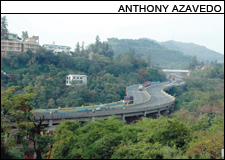 — Shailesh Vaidya, President, Indian Merchants’ Chamber
— Shailesh Vaidya, President, Indian Merchants’ Chamber
Set up in Mumbai in 1907, the Indian Merchants’ Chamber (IMC) is a premier chamber of trade, commerce and industry with around 3,200 direct members from a cross-section of the business community. Shailesh Vaidya tells Sandeep Menezes that the government needs to play the combined role of a facilitator, enabler and regulator to allay the fears of the private sector in infrastructure projects and ensure its greater participation.
Around 50 per cent of the 12th Plan’s estimated $1 trillion investment in infrastructure development is expected through private participation. Do you think this is achievable given that only 38 per cent private investment occurred in 11th Plan?
It is certainly achievable but for that the government must suitably incentivise public-private partnerships and enhance their operational efficiencies. It is well known that most PPPs in India are hotbeds of corruption and that remains a key reason for their inability to meet their desired objectives. It will be a pity if this state of affairs continues since the full potential of the private sector to meet India’s burgeoning infrastructure needs still remains largely untapped.
Infrastructure investment involves contracts which are more complex and of longer duration than those in most other economic sectors. Besides, they need to be operated under the double imperative of ensuring financial viability and meeting social objectives. These challenges become even more acute when governments involve international investors. A detailed cost-benefit analysis needs to be conducted at the outset, and sectoral differences need to be carefully accounted for.
After all, models for private involvement that serve the public interest in some part of the infrastructure sector may not be cost effective in others. The government needs to play the combined role of a facilitator, enabler and regulator to allay the fears of the private sector in this field and ensure its greater participation.
Land acquisition has been a major hurdle in infrastructure and industrial projects nationwide. How can this problem be resolved amicably?
The current form of the Land Acquisition Bill makes it difficult to acquire land for infrastructure and industrial projects. The current bill has too many loopholes for its provisions to produce the desired effect. The provision for compensation on the basis of “market value” of land will remain elusive in the absence of a well functioning land market in India.
Further, very few land transactions happen at the rural level which prevents the discovery of the real value of land. The issue is further compounded by the underreporting of the transaction price to avoid stamp duty. Further, it may even open the doors to speculative pricing. The records of property rights in India are depressingly inadequate and highly disorganised and hence the private sale of land can lead to numerous legal problems post-sale. All these regulatory and institutional issues need to be first sorted out and the entire bill redrafted accordingly, if the land acquisition problem is to be resolved amicably.
 How do you foresee India’s economic growth, especially with a slowing economic and volatile currency?
How do you foresee India’s economic growth, especially with a slowing economic and volatile currency?
Even though there are valid reasons for short-term concerns, the long-term fundamentals of the economy remain sound. The government has finally woken up to focus on growth resurgence with fiscal consolidation. The current account deficit is also being reined in. This strategy would help in facilitating inflation control, rationalising the interest rate structure, balancing the external accounts, and thus, shoring up the rupee.
The state is laying special emphasis on various administrative and governance reforms, especially those pertaining to public procurement and capacity building. The legal and institutional structure of the financial sector in India is being reviewed and recast in tune with contemporary global imperatives. An increasing emphasis on information technology and the harnessing of our unique demographic dividend through skill development initiatives is also being seen throughout the public sector. The construction of a new environment supporting innovation and experimentation is slowly but surely taking root in the country. All these are welcome developments that point to a resurgence in India’s long-term economic growth prospects.
Going forward, do you have suggestions for enhancing economic growth and industrial activity?
Much has been done but much more still remains to be done. To begin with, Goods and Services Tax (GST) must be introduced at the first available opportunity. This alone has the potential to raise our GDP growth rate by a full percentage point, by harmonising, streamlining and rationalising the indirect tax structure throughout the country.
The Direct Taxes Code (DTC), which would replace the existing Income Tax Act, also needs to be brought in on a priority basis to move our tax structure in the direction of compatibility with the developed world. The setting up of high quality educational institutes like the IITs and the IIMs in the technical and managerial spheres needs to be given a thrust.
Agriculture still forms the backbone of our rural economy but it does not get the attention it deserves, maybe because it is not a high profile sector. Our agricultural performance leaves a lot to be desired and unless special emphasis is placed upon irrigation and water management, as well as educating farmers about the adverse effects of global warming and climate change, enhancing the productivity of a sector employing two-thirds of our workforce is going to be an uphill task.
With our largely outdated labour laws, the manufacturing sector continues to remain uncompetitive vis-à-vis that of many Asian nations, particularly China. India is at a development stage when manufacturing can no longer be ignored and suitable tax incentives in this sector will go a long way in enhancing its efficacy.











